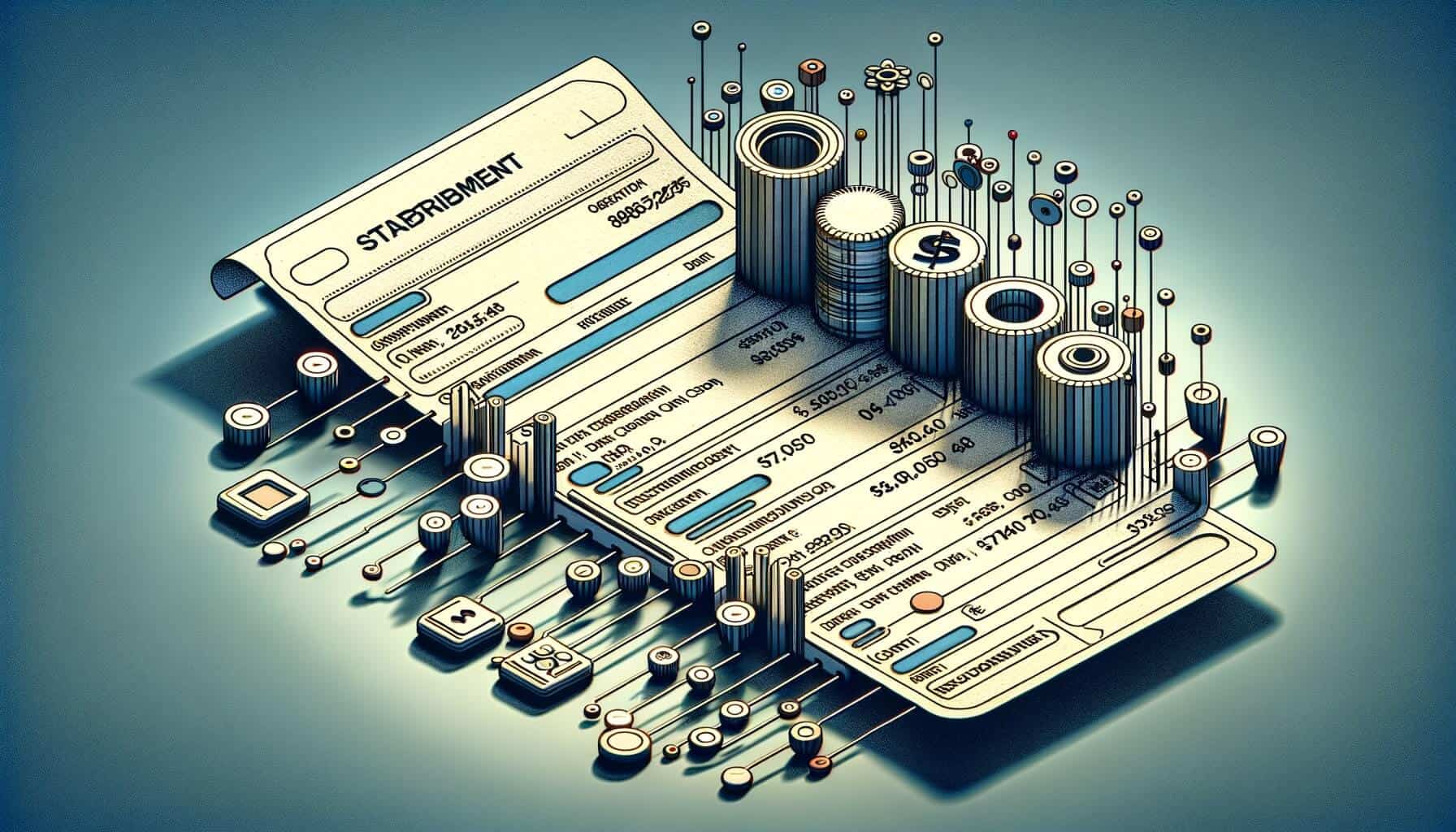
By Harriet Forster January 18, 2025
In the world of finance and business, statement descriptors play a crucial role in ensuring smooth transactions and providing clarity to customers. A descriptor is a brief description that appears on a customer’s bank statement, credit card statement, or any other financial statement. It helps customers identify the source of a transaction and understand what they are being charged for.
In this comprehensive guide, we will delve into the world of statement descriptors, exploring their importance, generation process, common types, best practices for creating effective descriptors, their impact on customer experience, how to modify or update them, their role in fraud prevention, and address frequently asked questions. By the end of this guide, you will have a thorough understanding of statement descriptors and how to harness their power effectively.
Understanding the Importance of Statement Descriptors
Statement descriptors are vital for ensuring customer satisfaction and reducing chargebacks. When customers review their credit card statements, they often encounter unfamiliar charges. A clear and concise descriptor helps them recognize the transaction and avoid confusion or potential disputes. By providing accurate information, it enhance customer trust and reduce the likelihood of chargebacks, which can be costly for merchants.
Furthermore, it contribute to a merchant’s brand image and reputation. A well-crafted descriptor reflects professionalism and instills confidence in customers. It allows merchants to establish a recognizable presence on customers’ credit card statements, reinforcing their brand identity and fostering customer loyalty.
How Statement Descriptors are Generated

Statement descriptors are typically generated by the payment processor or gateway used by the merchant. When a transaction occurs, the merchant’s payment processor assigns a descriptor to the transaction based on predefined rules and guidelines. These rules may include the merchant’s business name, a unique identifier, or a combination of both. The descriptor is then transmitted to the customer’s credit card statement, ensuring accurate representation of the transaction.
To generate effective descriptors, merchants must provide accurate and relevant information to their payment processors. This includes their registered business name, contact information, and any additional details that can help customers identify the transaction. By collaborating closely with their payment processors, merchants can ensure that the generated descriptors align with their branding and customer expectations.
Common Types of Statement Descriptors

Statement descriptors come in various forms, depending on the nature of the transaction or business. Some common types include:
1. Business Name: Many businesses choose to use their official business name as the descriptor. This helps in brand recognition and allows customers to easily identify the source of the transaction.
2. Product or Service Description: Some businesses opt for a more specific that describes the product or service being provided. For example, a subscription-based business may use a descriptor like “Monthly Membership” or “Digital Content Subscription.”
3. Abbreviations or Acronyms: In some cases, businesses may use abbreviations or acronyms as statement descriptors to save space or maintain consistency with their branding. However, it is important to ensure that the abbreviation is easily recognizable and does not cause confusion for customers.
4. Contact Information: Certain businesses may include their contact information, such as a phone number or website, in the descriptor. This can be helpful for customers who may have questions or concerns about a transaction.
The Role of Statement Descriptors in Payment Processing

Statement descriptors serve as a crucial link between merchants, customers, and payment processors. They facilitate smooth payment processing by ensuring accurate representation of transactions on credit card statements. Here are some key roles that play in payment processing:
1. Transaction Identification: Statement descriptors help customers identify and associate transactions with specific merchants. By providing clear and recognizable information, they minimize confusion and reduce the likelihood of chargebacks.
2. Branding and Reputation: Well-crafted statement descriptors contribute to a merchant’s branding efforts. They allow merchants to establish a consistent presence on customers’ credit card statements, reinforcing their brand identity and fostering customer loyalty.
3. Customer Trust and Satisfaction: Accurate and transparent descriptors enhance customer trust and satisfaction. When customers can easily recognize and understand their transactions, they are more likely to feel confident in their purchasing decisions and maintain a positive perception of the merchant.
4. Dispute Resolution: In the event of a dispute or chargeback, statement descriptors play a crucial role in resolving the issue. By providing clear information about the transaction, they enable payment processors and card issuers to investigate and resolve disputes efficiently.
Best Practices for Creating Effective Statement Descriptors

Creating an effective statement descriptor requires careful consideration and adherence to best practices. Here are some key tips to keep in mind:
1. Be Clear and Concise: Statement descriptors should be brief and to the point. Avoid using complex or ambiguous language that may confuse customers. Instead, focus on providing a clear description of the transaction.
2. Reflect Your Brand: Your statement descriptor is an opportunity to reinforce your brand identity. Consider using your business name or a description that aligns with your brand image. This can help in brand recognition and customer trust.
3. Avoid Jargon or Technical Terms: Remember that your customers may not be familiar with industry-specific jargon or technical terms. Use language that is easily understandable to a wide range of customers.
4. Test for Clarity: Before finalizing your statement descriptor, test it with a sample group of customers or colleagues. Ask for their feedback on its clarity and effectiveness in representing your business.
5. Comply with Guidelines: Ensure that your statement descriptor adheres to the guidelines set by your payment processor or bank. Failure to comply with these guidelines may result in rejection or modification of your descriptor.
The Impact of Statement Descriptors on Customer Experience
Statement descriptors have a significant impact on customer experience. A well-crafted descriptor can enhance customer satisfaction and reduce confusion. On the other hand, a poorly designed or unclear descriptor can lead to frustration and potential chargebacks.
A clear and recognizable statement descriptor helps customers easily identify the source of a transaction, especially in cases where they may not remember making a purchase or signing up for a subscription. This transparency builds trust and reduces the likelihood of customers disputing a charge or seeking a refund.
Furthermore, a descriptive statement descriptor can also help customers manage their finances effectively. By providing a clear description of the product or service, customers can easily track their expenses and identify any discrepancies or unauthorized charges.
How to Modify or Update
There may be instances where a business needs to modify or update their statement descriptor. This could be due to a rebranding effort, a change in the nature of the business, or simply to improve clarity for customers. The process of modifying or updating it varies depending on the payment processor or bank used by the business. However, here are some general steps to follow:
1. Contact Your Payment Processor or Bank: Reach out to your payment processor or bank and inform them about your intention to modify or update your statement descriptor. They will provide you with the necessary instructions and requirements.
2. Provide Relevant Documentation: In most cases, you will be required to provide supporting documentation for the modification or update. This may include legal documents, business registration information, or any other relevant proof.
3. Follow the Guidelines: Ensure that your modified or updated statement descriptor complies with the guidelines provided by your payment processor or bank. Failure to do so may result in rejection or delay in the update process.
4. Communicate with Customers: It is important to inform your customers about the change in your statement descriptor. This can be done through email notifications, website announcements, or any other communication channels you have established with your customers.
Potential Challenges and Pitfalls with Statement Descriptors
While statement descriptors are essential for effective payment processing, they can present challenges and pitfalls for merchants. Here are some potential issues to be aware of:
1. Character Limitations: Credit card statements often impose character limitations for statement descriptors. This can be challenging for merchants with long business names or those who wish to include additional information in the descriptor. Striking a balance between clarity and brevity is crucial in such cases.
2. Abbreviation Confusion: If merchants choose to abbreviate their business names, there is a risk of confusion among customers. It is essential to ensure that the abbreviation remains recognizable and does not cause any misunderstandings.
3. Branding Consistency: Statement descriptors should align with a merchant’s branding efforts. However, maintaining consistency across different payment processors and platforms can be challenging. Merchants must work closely with their payment processors to ensure consistent branding across all transactions.
4. Chargeback Disputes: In some cases, customers may dispute a transaction based on the it. This can occur if the descriptor is unclear or if the customer does not recognize the transaction. Merchants must be prepared to handle such disputes promptly and provide evidence to support the legitimacy of the transaction.
Frequently Asked Questions
Q1: Can I change my statement descriptor anytime I want?
While it is possible to change your statement descriptor, it is important to follow the guidelines and requirements set by your payment processor or bank. Some processors may have restrictions or limitations on how frequently you can modify your descriptor.
Q2: What should I do if a customer does not recognize my statement descriptor?
If a customer does not recognize your statement descriptor, it is important to provide them with additional information or context. This can be done through customer support channels or by including contact information in the descriptor itself.
Q3: Can a statement descriptor be too long?
Most payment processors and banks have character limits for statement descriptors. It is important to adhere to these limits to ensure that the descriptor is displayed correctly on customers’ statements.
Q4: Can I use special characters or emojis in my statement descriptor?
The use of special characters or emojis in statement descriptors varies depending on the payment processor or bank. It is best to consult their guidelines to determine if such characters are allowed.
Conclusion
By understanding the importance of statement descriptors, how they are generated, the common types, best practices for creating effective descriptors, their impact on customer experience, how to modify or update them, their role in fraud prevention, and addressing frequently asked questions, businesses can harness the power of statement descriptors to enhance their brand image, improve customer satisfaction, and prevent fraud.